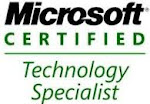SharePoint adds caching mechanism with output caching that
is available in ASP.Net 2.0. It contains Cache profiles that we can name and
apply the pages and page items, content types and levels of scales in the
development environment.
By using cache profiles we can control the quality level of
the output caching in SharePoint site. It will allow or disallow site owners to
choose their cache profiles. We can manage the user access permissions to
SharePoint depending on the access to the site. Output cache renders the page,
same way for users in same right. After creating and deploying the cache
profile, any change that affects the cache profile will affects all the content
access of the profile.
To enable output cache settings,
Navigate to Site Settings menu and click on Site Collection
Output cache in Site Collection Administration section
In the Output Cache Settings page, check Enable output cache check box to enable output cache.
Select cache profile for anonymous from Anonymous Cache
Profile list. This applies for anonymous users access for a site in Site
Collection. To choose authenticated users from Authenticated Cache
profile list. This will apply for authenticated users to access in a site in
the Site Collection. To display additional cache information on the site
collection pages that including the date and time of the page rendered earlier
select Enable debug cache information on pages.
To create new caching profiles,
Navigate to Site Setting menu in SharePoint site. Click on Site collection cache profiles in Site Collection
Administration.
Click on New to Create new cache profile.
Provide Title, Display Name, Description for Cache profile
in Title, Display name Display Description columns. To ensure that all items in the cache are security trimmed
check “Perform ACL Check” check box. To enable the cache, check “Enabled”
check box. Enter Duration to specify the number of seconds to keep the
cached version available. Check for changes will validates the page requests
that the site has and to flush the cache. If we unchecked this system will not check
for the updates on the sites.
Vary by custom parameter, Vary by HTTP Header and Vary by
User Rights will specifies the values described in the ASP.Net cache policy. By
selecting Vary by User Rights, we can ensure that users will have effective
rights on the SharePoint site that having on the cached page. Select any value in Cacheability drop down Select the
policies to allow the authenticated users and page layout designers to apply
authenticated scenarios. Check “Allow Writers to View Cached Content” to not
allowing people with edit rights to cache their pages.








